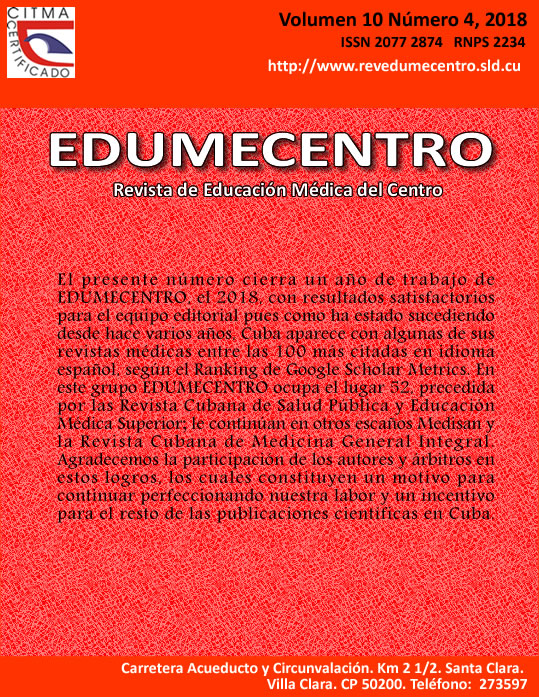Educational software for the learning of cardiac arrhythmias in Pediatrics
Keywords:
information technologies and communication projects, students, medical, arrhythmias, cardiac, pediatrics, education, medical.Abstract
Background: arrhythmias are a public health problem throughout the world, due to their frequency, morbidity and mortality.
Objective: to design educational software to contribute to the learning of pediatric arrhythmias in medical students.
Methods: a development research was carried out in the Faculty of Medicine of the University of Medical Sciences of Villa Clara in the 2013-2014 academic year. Theoretical methods were used for the interpretation and processing of information and the theoretical referents of the subject; empirical: documentary analysis of the programs and methodological orientations, and for the evaluation of the product by specialists and users, the survey in its questionnaire modality.
Results: the contents were determined according to the program of the subject, among them: anatomy of the heart, cardiac physiology, system of electrical conduction of the heart, reading of the electrocardiogram and arrhythmias and their characteristics, which were included according to software design in General, Arrhythmias, Books and Gallery.
Conclusions: the product was valued by specialists as necessary and useful for teaching, of great applicability, with quality and depth in the contents treated; according to the criteria of users it was considered as functional, easy to use, innovative, with aesthetic quality and adequate contents.
Downloads
Published
How to Cite
Issue
Section
License
Los autores que publican en esta revista están de acuerdo con los siguientes términos:- Los autores/as conservarán sus derechos de autor y ceden a la revista el derecho de primera publicación de su obra, el cuál estará simultáneamente sujeto a una Licencia Creative Commons Reconocimiento-NoComercial-CompartirIgual 4.0 Internacional (CC BY-NC-SA 4.0) que permite a terceros compartir la obra siempre que se indique su autor y su primera publicación esta revista.
- Los autores pueden establecer por separado acuerdos adicionales para la distribución no exclusiva de la versión de la obra publicada en la revista (por ejemplo, situarlo en un repositorio institucional o publicarlo en un libro), con un reconocimiento de su publicación inicial en esta revista.
- Se permite y se anima a los autores a difundir sus trabajos electrónicamente (por ejemplo, en repositorios institucionales o en su propio sitio web) antes y durante el proceso de envío, ya que puede dar lugar a intercambios productivos, así como a una citación más temprana y mayor de los trabajos publicados (Véase The Effect of Open Access) (en inglés).










